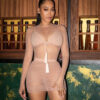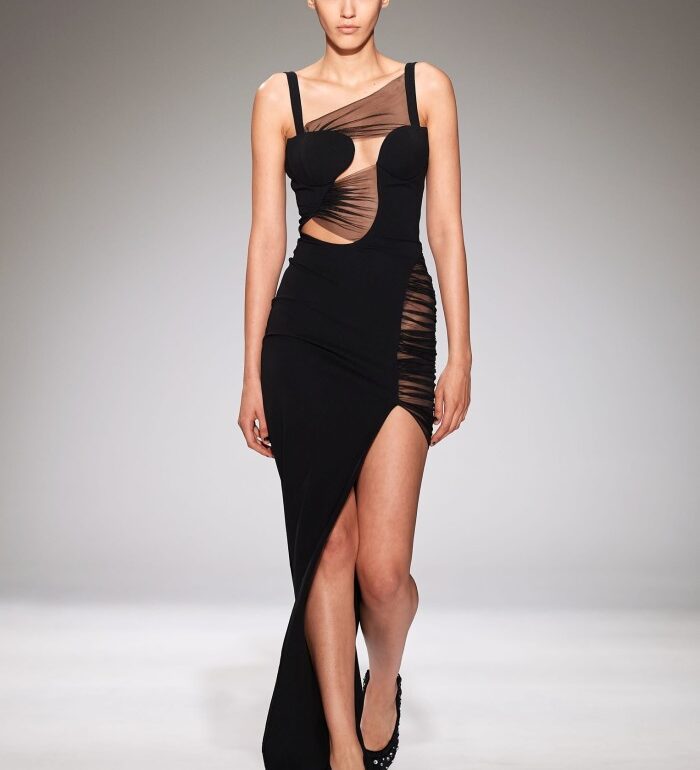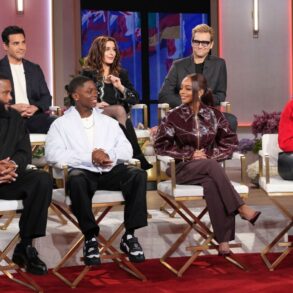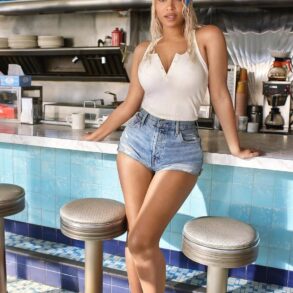Some people research Hinge matches with investigative skills that rival anything out of Scotland Yard. For me, it’s online shopping that brings out my inner detective. I scrutinise ecommerce pictures of tops and dresses for design details that would disqualify them from admission into my wardrobe. Does the back scoop too low? Is that a mid-sternum cut-out I spy? What about those straps — are they wide enough?
The objective of all the zooming and squinting is simple: to assess whether a given garment will be compatible with a bra.
For all the declarations of their death during of Covid-19, most women still count their underwire bras as essentials. Essentials some of us would prefer not to display. This desire may seem easy to accommodate, but it’s not a given for most brands. And in recent seasons, many fashion designers have expected clients to happily go braless, in backless, spaghetti-strap or side-cut-out-heavy collections. Why is it so hard to find fashion that works with breasts?
A conversation I had with a brand founder a few seasons ago hints at one possible answer. Reviewing her collection and failing to find a single non-backless dress, I asked if she thought any of her clients might appreciate options that permitted them to wear a bra. She answered with another question: “Doesn’t everyone have boob jobs now?”
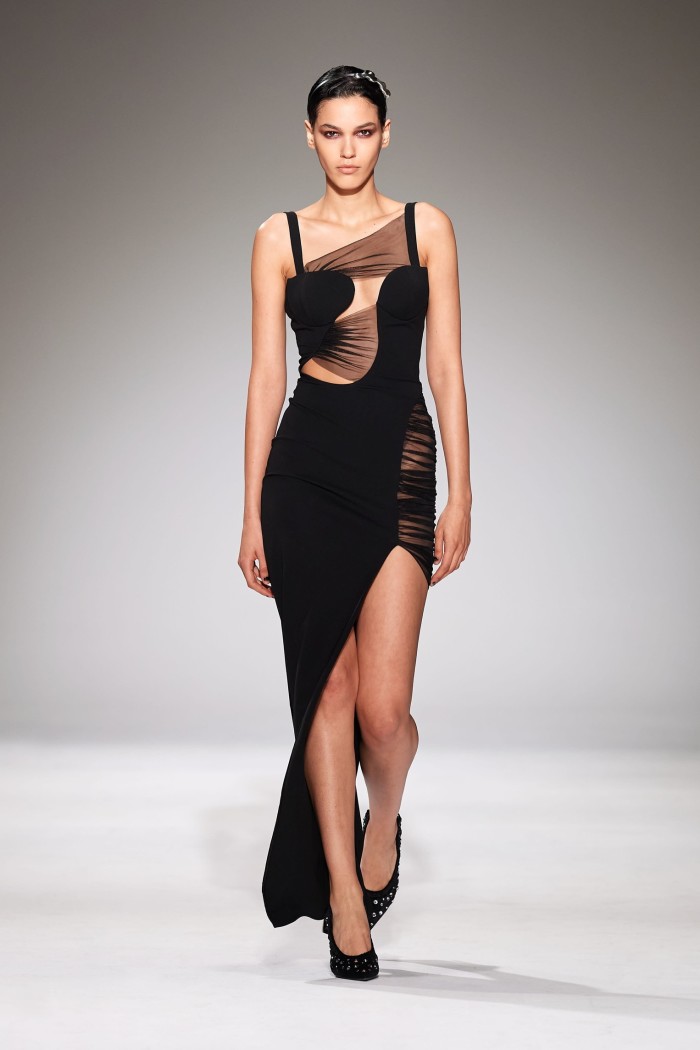




That, combined with the persistence of thinness as a body ideal — particularly in the age of Ozempic — amounts to a perception that the fashion industry is still not especially interested in larger bodies even if there are more curvy models on the catwalks.
There are exceptions, of course. Luxury clients with curves swear by Vivienne Westwood and Alexander McQueen. And London-based designer Emilia Wickstead says she is “constantly thinking about how a garment is going to hold you”. She uses architectural seaming to cut dresses that “hold you as a bra or corset would”, and checks for bra-compatibility in every production fitting. “It’s imperative that everything you buy from us, you can wear with a bra.”
Rumblings of change are coming from emerging designers, too. At London Fashion Week, Dublin-born Sinéad O’Dwyer showed shirts with built-in, bust-framing bodysuits, available from UK sizes 8 to 30. In Milan, the London-based Brazilian-born designer Karoline Vitto showed a collection exclusively on curvier models, featuring printed bras, leopard-print corsets and sinuous dresses with integrated support.
“I always wear a bra. Most women do, so we definitely take it into account,” says LVMH Prize winner Nensi Dojaka. While the London-based designer acknowledges that in the beginning her wispy, lingerie-inspired dresses may have been perceived “as being worn exclusively by skinny people”, her latest collection reflects a more inclusive approach with underwiring, padding, adjustable straps and other features borrowed from the lingerie world integrated into her sheer-panelled tops and dresses.
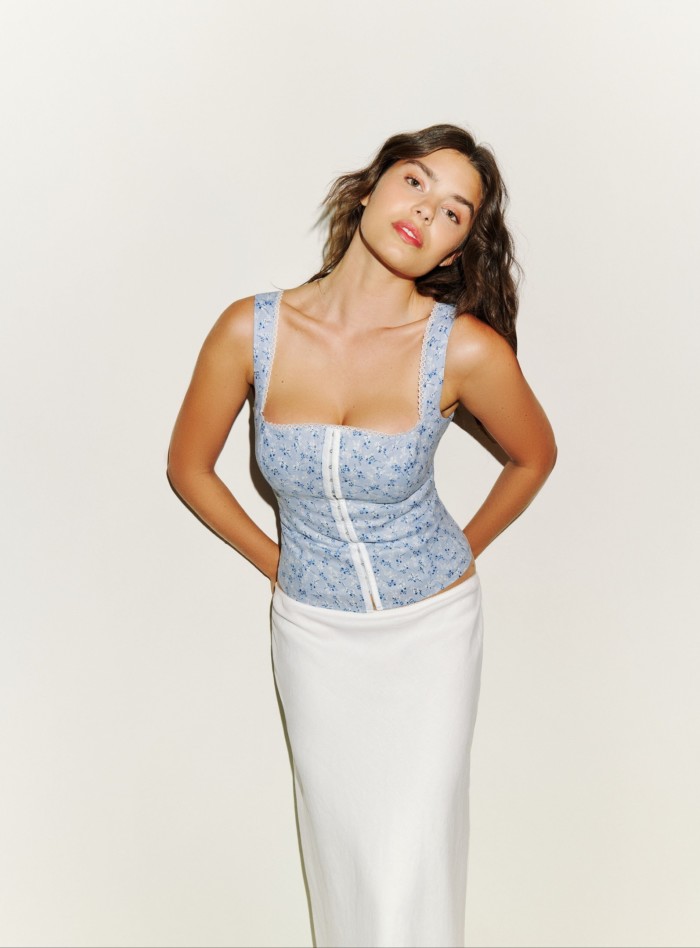



Reformation, a LA-based brand known for its flirty dresses, recently introduced a filter to winnow out any non-bra-compatible styles. Tick the “bra-friendly” box on its website and the dresses, tops or bridalwear displayed will have the coverage deemed prerequisites for BFF (meaning bra-friendly fashion) status. Shoppers in physical stores can use touchscreens to filter their search.
“There are a lot of customers who are doing this calculus in their heads already,” says Reformation chief executive Hali Borenstein. “We’re just trying to make it a little bit easier.”
The elements that contribute to a garment’s bra-friendliness (or not) include the overall degree of chest coverage, the fabric’s stretch content, adjustable straps, support level in the structure of the bodice and the cut of the back. Styles requiring strapless bras need not apply; ditto backless styles and garments with an ultra-deep-V neckline.
Most women whose bra sizes include a DD cup or higher have stories of shopping let-downs — and some interesting workarounds. Davina Wedderburn-Thompson, head of brand and communications at the British Fashion Council, wears her favourite knitted dress backwards, because the midriff cut-out in the front would expose the bottom of her bra.
“I’ve really built my style around trying to accommodate them,” says Amelia Penfold, founder of AP Communications. She remembers attending a meeting early in her career where a fashion buyer declared that fashion is not for breasts. “The reality is, she was right. There are just so few designers who allow for them, from high street to high end.” She calls good tailoring “a godsend — I nearly always end up in a suit for formalwear.”
I have my own tactics. Namely taking nearly everything I buy to a tailor who gets it. When a V-neck is deep enough to show a bra’s centre gore, she can steal fabric from a deep hem to fill it in. Other tricks: adding a snap between gaping buttons on a shirt or shirt dress; taking up shoulders; adding bra loops to straps. (No one said this would be simple or inexpensive. Consider it a boob tax.)
“The reality is that most women will not buy something that doesn’t permit them to wear a bra,” says Ikram Goldman, founder of high-end Chicago clothing store Ikram. “With every dress that I buy [for the store], I consider who’s going to wear it and what undergarment — not just bras — they ’re going to use under that.”
So far, Reformation appears to be the only brand with a bra-friendly filter. (I asked several publicists from major multibrand retailers whether a BFF might be something their employers would consider. “I’m not sure that’s in the pipeline,” one replied.) But it’s so useful that I wonder if more vendors won’t adopt it soon.
Come to think of it, there are plenty of other filters that would have shoppers sighing in relief: A “pockets” filter. A “washable” filter. A “looks good with black tights” filter. Today, bra-friendly filters. Tomorrow, the world.
Find out about our latest stories first — follow @financialtimesfashion on Instagram
This post was originally published on this site be sure to check out more of their content.


